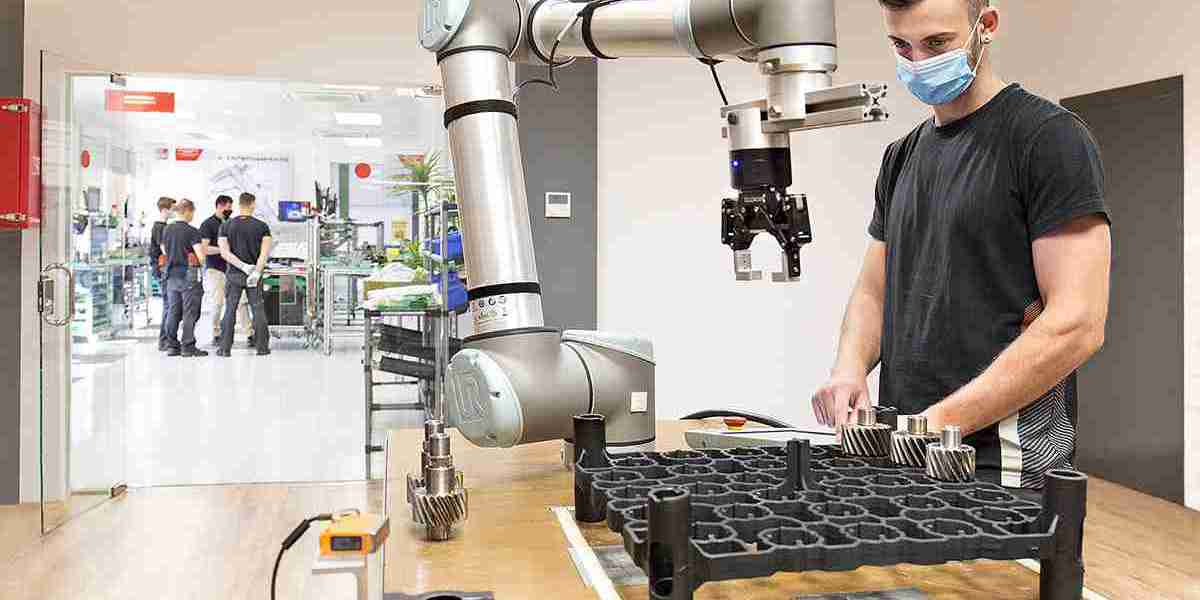The collaborative robots market is rapidly evolving, driven by advancements in automation and robotics. These robots, designed to work safely alongside human workers, offer a flexible, efficient solution for various industries, ranging from manufacturing to logistics. While established players like Universal Robots and Fanuc dominate the space, a new wave of startups is bringing fresh innovations to the market, fueling its expansion and diversifying the applications of cobots.
Emerging Startups in the Collaborative Robots Market
Startups are playing a crucial role in driving the evolution of collaborative robots by developing cutting-edge technologies, creating new applications, and addressing unmet needs in the market. These emerging companies are shaping the future of cobots through their innovations in artificial intelligence (AI), machine learning, sensor technologies, and user-friendly designs.
RightHand Robotics
RightHand Robotics is a startup that focuses on intelligent robotic picking solutions. The company’s RightPick platform uses advanced AI to enable cobots to autonomously pick and handle objects in unstructured environments. This is particularly useful in e-commerce and logistics, where robots must manage a wide variety of items. The flexibility and adaptability of RightPick make it a game-changer for SMEs looking to automate their warehouse operations.Dexterity
Dexterity is another startup that is revolutionizing the cobot market with its focus on dexterous manipulation. The company develops robots capable of performing complex tasks such as sorting, assembly, and packaging. Using AI-driven grasping technology, Dexterity’s cobots can handle delicate objects with precision, making them ideal for industries such as food processing, electronics, and pharmaceuticals. Their robots combine the agility of human workers with the efficiency of machines, offering a new level of productivity.Festo
Although not a traditional startup, Festo is an innovative player offering cutting-edge cobots for industrial automation. The company has developed the BionicCobot, which mimics the movements of the human arm. This bionic design allows cobots to carry out tasks like assembly, picking, and material handling with incredible precision. Festo’s combination of biomechanics and robotics opens up new possibilities for flexible manufacturing solutions.Miso Robotics
Miso Robotics is a startup that applies cobot technology to the foodservice industry. Their flagship product, Flippy, is a robotic kitchen assistant that uses AI to cook food and assist kitchen staff. Flippy can fry, grill, and flip burgers, making it an ideal solution for restaurants and fast food chains. By automating repetitive tasks, Miso Robotics enables foodservice establishments to increase efficiency and reduce labor costs.
Innovations Driving the Market Forward
Several key innovations are reshaping the collaborative robot landscape, making them more accessible, flexible, and capable of performing a wider range of tasks.
Artificial Intelligence (AI) and Machine Learning
One of the most significant innovations in the cobot market is the integration of AI and machine learning. These technologies enable cobots to learn from experience, adapt to changing environments, and perform tasks autonomously. Startups are using AI to enhance cobot perception, allowing robots to recognize objects, analyze their surroundings, and make real-time decisions. This has expanded the scope of cobots beyond repetitive tasks to more complex, dynamic applications.Advanced Sensing and Safety Features
Cobots are equipped with sensors that allow them to safely interact with humans. Emerging startups are further enhancing these safety features by integrating more advanced sensors, including vision systems, force-torque sensors, and proximity detectors. These sensors enable cobots to sense human presence and avoid accidents, making them safer and more efficient for collaborative work environments.Modular and Flexible Designs
Startups are also focusing on creating modular, flexible cobots that can be easily reprogrammed or adapted to different tasks. This flexibility is particularly appealing to SMEs, which often face changing production demands. Modular cobots can be easily customized, allowing businesses to scale their automation efforts as needed without requiring extensive reconfiguration or investment in new robots.
Conclusion
The collaborative robots market is seeing rapid growth, fueled by the innovations brought forward by emerging startups. These companies are leveraging advanced technologies such as AI, machine learning, and enhanced sensing to develop cobots that are safer, smarter, and more versatile. As startups continue to push the boundaries of what cobots can do, industries ranging from logistics to foodservice are benefiting from greater efficiency, lower costs, and enhanced productivity. With continued innovation and adoption, the future of collaborative robots looks promising, and these startups are poised to play a pivotal role in shaping that future.




